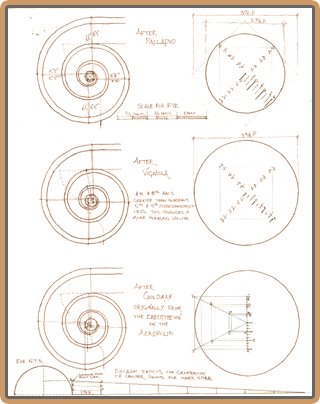People fall within a range of proportions. Men can range from 7:1 on the squat and robust end, to 9:1 on the attenuated end (this proportion is reserved for adolescent boys and delicately proportioned men) Women can range from 8:1 on the more full-figured side of the scale to 10:1 for adolescents and very ethereally proportioned girls. Why the importance? Because if you're trying to draw a matronly lady you'd proportion her at 8:1. A barrel chested farmer who has spent his life working in the fields would be 7:1. A vestal virgin would be 9 1/2 or 10:1, while the effeminate and lisping Alcibiades would probably be well represented by an epicene body that is 8 1/2 or even 9 heads high--it all depends on what you're trying to represent to the audience. One thing is clear... Alcibiades at 7:1 wouldn't be right.
All this doesn't take into account the proportion of children which never meet the mark of adults--a phenomenon found in the higher mammals known as allometric growth--they start out in life with a head 25% or more of their body length, and then gradually stretch, becoming overly attenuated at adolescence before they elastically snap back to the overall proportion of maturity they'll maintain until old age, at which time they head back to, well, 0:1.

What is being set up here is a set of 'keys' for architectural design. There are 5 basic keys in the ordering of architecture. In fact, they are called the 5 'Orders', and many of you just call them the different kinds of classical columns. They are, in order of robust and non-sculptural to attenuated and highly ornamented, Tuscan, Doric, Ionic, Corinthian, and Roman (sometimes called Composite). Above is a parallel of the orders I drew comparing the orders to each other, keeping the height static and the lower diameter, or modulus, variable. How are they related to the human figure? Because the classical orders, anthropomorphic in origin and symbol, share the same basic proportions as the range of human figures. The Tuscan is 7:1, the Doric 8:1, Ionic 9:1, while Corinthian and Roman are 10:1, but differ in the amount and delicateness of ornamentation. Note that along the scale there is no ornamentation on the Tuscan (who's heard of a country farmer wearing jewelry?) All the way up to highly ornamented in the effeminate range of Corinthian and Composite.
Now, back to why they're called 'Orders'. They are given this name because they give order, they modulate the style, proportion and ornamentation of, the architecture. This is most clearly understood when it comes to building typologies. While it would be fitting for a Theater, the function of which is delicate, entertaining and frivolous to be in the 'key' of Corinthian or Composite, it would be an altogether misleading impropriety for a bank to be of such an order, given that it needs to project the ideas of sturdiness, lastingness, and impenetrability. So too, when choosing the order for a certain church dedication: It would be fitting for a church dedicated to St. Paul to be ordered with the Doric order, as he was a strong, princely figure. But to choose Doric rather than Composite for a church dedicated to St. Therese of Lisieux would be to represent the girl rather not as a little flower but as a douglas fir.
Granted, this is modulation 101, and while architects can most certainly change 'keys' within one piece of art in the same way as Bach does in his music, we nevertheless have to learn the basics first, or you designers out there will totally screw up your façade, also known as façadomy. This is often why I'm so frequently losing my temper at idiotic uses of columnar elements in McMansions and the like. Contemporary architects are ruining a perfectly good and clear symbology when they slap up a Tuscan column here, a Corinthian there, an Ionic around the bathtub, just for the 'look at me I'm wealthy factor'. Heck, in the majority of designs, you don't even NEED a column for the Order to be present, but rather the proportional and ornamental principles ought be present in all features and done in a commodius manner, and never for a Mannerist commode, as one would find at Mike's Marbleopolis:



No comments:
Post a Comment